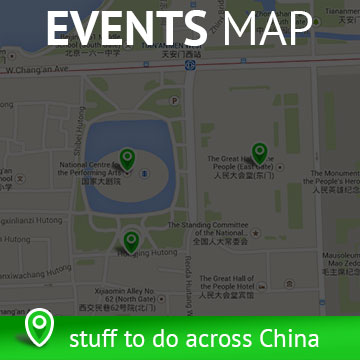
One of the cheapest, most exhilarating forms of entertainment in the People’s Republic has to be the country’s local transportation. For a single yuan you can synthesis what it is to be canned fish with a trip on the city bus, and for only a handful more you can gain a new respect for life as a cabbie reenacts scenes from Bullitt while casually questioning you about what country you’re from and how much your salary is.
The major forms of local transportation in China are busses, taxis, motorcycle taxis, and mini taxis. In the larger cities, this is supplemented with modern light-rails and subway systems. What follows is a brief description of each.
The Bus
The quality and price of busses varies from place to place, and usually will be more expensive depending on how big the city is, and how far you need to go. Generally speaking though, the bus will cost you between one and two yuan per ride. This payment does most definitely not entitle you to any sort of seating; in fact, depending on the time of day, you may have trouble getting on the bus at all without having your rear or extremities caught in the door.
You’ll need exact change for most city-run buses, but the privately run ones will break a bill for you if you need it. You can generally tell the difference between the two as the private busses often have a person hanging out a window shouting the destination and price, or possibly jumping right out of the vehicle and trying to pull you on-board.
Taxis
Taxis also change in price depending on where you are in China. Usually the cab will have a fixed rate for the first so-many kilometers, and then charge a fixed rate for every bit of distance after that. Often the base-rate is posted on the car door windows, and should also be the amount initially stated on the meter. You may be able to negotiate a set price if you don’t want to go off the meter, but unless you know the distance and approximate amount it should cost, this can be risky.
If you require your taxi to obey all traffic regulations, not endanger the lives of pedestrians, and generally respect your health and safety — be advised, you might want to choose another form of transportation. If you’ve seen the high-speed highway chase scene in the second Matrix movie, you’ll have some preliminary idea of what the average Chinese cab ride is like.
Cabbie’s can be both friend and foe, but as with many things in China, if you’re foreign, you’re often seen as a walking yuan sign. It’s a fact of China being a poorer nation, and it’s not likely to change while this Web site is still running, so best to accept it and be on guard. Watch the meter and do your best to remember the general direction things are so you can determine if you’re being taken for a ride, other than that expected. There are a few notorious places for tourists being ripped off with cab rides, with meters often getting doubled in price — be on guard coming from train & bus stations and/or airports. Look for designated taxi stands, and avoid pushy black car drivers that jump on you as soon as you exit the station.
Motorcycle Taxis
This is a convenient and slightly cheaper alternative to standard taxis. These guys, looking every bit the part on their bikes (despite the knit seat covers), can duck and weave through traffic like there’s no tomorrow – which has been quite literally the case for many passengers. As one of China’s more dangerous forms of transport, be wary you’re not sacrificing safety for savings. There is rarely a set rate, and always negotiate the price before you hop on.
Mini Taxis
Commonly called Sanlunche (三轮车) or beng-bengs (named so from the noise they admit), mini taxis are similar in function if not design as Thailand’s somewhat notorious tuk-tuks. Essentially a motorcycle engine powering a tricycle of sorts, these little guys can’t get up much speed, and thus aren’t great for longer distances, but they’re a good alternative to taxis, and slightly safer than motorbikes. As with their two-wheeled brethren, barter the price before the journey.
Urban Rails
More and more of the sprawling metropolises that make up China’s vast collection of cities are building some sort of urban rail system, whether above ground or beneath it. As the country continues to prosper economically, more and more people are filling up the roads with automobiles. As such, the government has a very real challenge of developing a mass-transit system to ease these pressures. With more than 40 cities with populations exceeding 1 million people, it’s an understatement to say it’s a rather large-scale task. Cities currently with a subway system include: Beijing, Shanghai, Hong Kong, Guangzhou, Wuhan, Chongqing, Nanjing, Shenzhen, Tianjin. Cities with subways in some form of development include: Qingdao, Haerbin, Hangzhou, Dalian, Suzhou and Xi’an.
Photo by Steve Minor







